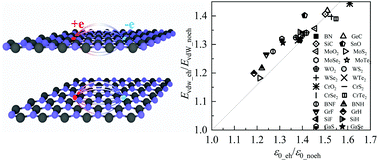Large excitonic effect on van der Waals interaction between two-dimensional semiconductors†
Abstract
An exceptionally large excitonic effect on the van der Waals (vdW) interaction between two-dimensional semiconductors is unraveled using the Lifshitz theory in conjunction with the ab initio GW plus Bethe–Salpeter equation formalism. Upon consideration of the electron–hole interaction, the vdW energy between two atomistic layers separated by 10 000 angstroms can be larger by a ratio of ∼30%, which is an order of magnitude greater than that seen for semi-infinite silicon surfaces. The large influence of the short-range electron–hole interaction on the long-range effect of quantum fluctuations is rooted in the ultra-thin nature of two-dimensional semiconductors which results in not only large exciton binding energy but also amplified roles of low-frequency dielectric responses.



 Please wait while we load your content...
Please wait while we load your content...